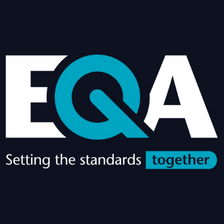Part 1 syllabus
Domain 1: Foundations of Internal Auditing (15%)
|
A |
Interpret The IIA's Mission of Internal Audit, Definition of Internal Auditing, and Core Principles for the Professional Practice of Internal Auditing, and the purpose, authority, and responsibility of the internal audit activity |
Proficient |
|
B |
Explain the requirements of an internal audit charter (required components, board approval, communication of the charter, etc.) |
Basic |
|
C |
Interpret the difference between assurance and consulting services provided by the internal audit activity |
Proficient |
|
D |
Demonstrate conformance with the IIA Code of Ethics |
Proficient |
Domain II: Independence and Objectivity (15%)
|
A |
Interpret organisational independence of the internal audit activity (importance of independence, functional reporting, etc.) |
Basic |
|
B |
Identify whether the internal audit activity has any impairments to its independence |
Basic |
|
C |
Assess and maintain an individual internal auditor's objectivity, including determining whether an individual internal auditor has any impairments to his/her objectivity |
Proficient |
|
D |
Analyse policies that promote objectivity |
Proficient |
Domain III: Proficiency and Due Professional Care (18%)
|
A |
Recognise the knowledge, skills, and competencies required (whether developed or procured) to fulfil the responsibilities of the internal audit activity |
Basic |
|
B |
Demonstrate the knowledge and competencies that an internal auditor needs to possess to perform his/her individual responsibilities, including technical skills and soft skills (communication skills, critical thinking, persuasion/negotiation and collaboration skills, etc.) |
Proficient |
|
C |
Demonstrate due professional care |
Proficient |
|
D |
Demonstrate an individual internal auditor's competency through continuing professional development |
Proficient |
Domain IV: Quality Assurance and Improvement Program (7%)
|
A |
Describe the required elements of the quality assurance and improvement program (internal assessments, external assessments, etc.) |
Basic |
|
B |
Describe the requirement of reporting the results of the quality assurance and improvement program to the board or other governing body |
Basic |
|
C |
Identify appropriate disclosure of conformance vs. nonconformance with The IIA’s International Standards for the Professional Practice of Internal Auditing |
Basic |
Domain V: Governance, Risk Management, and Control (35%)
|
A |
Describe the concept of organisational governance |
Basic |
|
B |
Recognise the impact of organisational culture on the overall control environment and individual engagement risks and controls |
Basic |
|
C |
Recognise and interpret the organisation's ethics and compliance-related issues, alleged violations, and dispositions |
Basic |
|
D |
Describe corporate social responsibility |
Basic |
|
E |
Interpret fundamental concepts of risk and the risk management process |
Proficient |
|
F |
Describe globally accepted risk management frameworks appropriate to the organisation (COSO - ERM, ISO 31000, etc.) |
Basic |
|
G |
Examine the effectiveness of risk management within processes and functions |
Proficient |
|
H |
Recognise the appropriateness of the internal audit activity’s role in the organisation's risk management process |
Basic |
|
I |
Interpret internal control concepts and types of controls |
Proficient |
|
J |
Apply globally accepted internal control frameworks appropriate to the organisation (COSO, etc.) |
Proficient |
|
K |
Examine the effectiveness and efficiency of internal controls |
Proficient |
Domain VI: Fraud Risks (10%)
|
A |
Interpret fraud risks and types of frauds and determine whether fraud risks require special consideration when conducting an engagement |
Proficient |
|
B |
Evaluate the potential for occurrence of fraud (red flags, etc.) and how the organisation detects and manages fraud risks |
Proficient |
|
C |
Recommend controls to prevent and detect fraud and education to improve the organisation's fraud awareness |
Proficient |
|
D |
Recognise techniques and internal audit roles related to forensic auditing (interview, investigation, testing, etc.) |
Basic |








